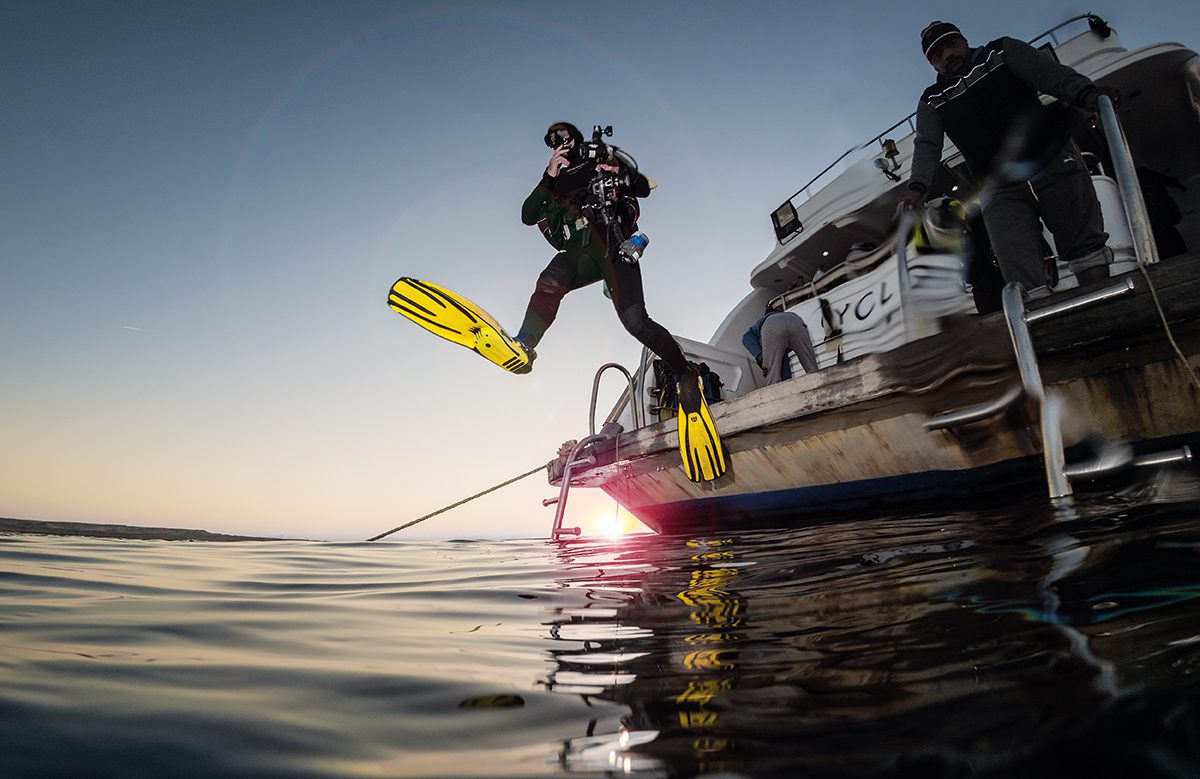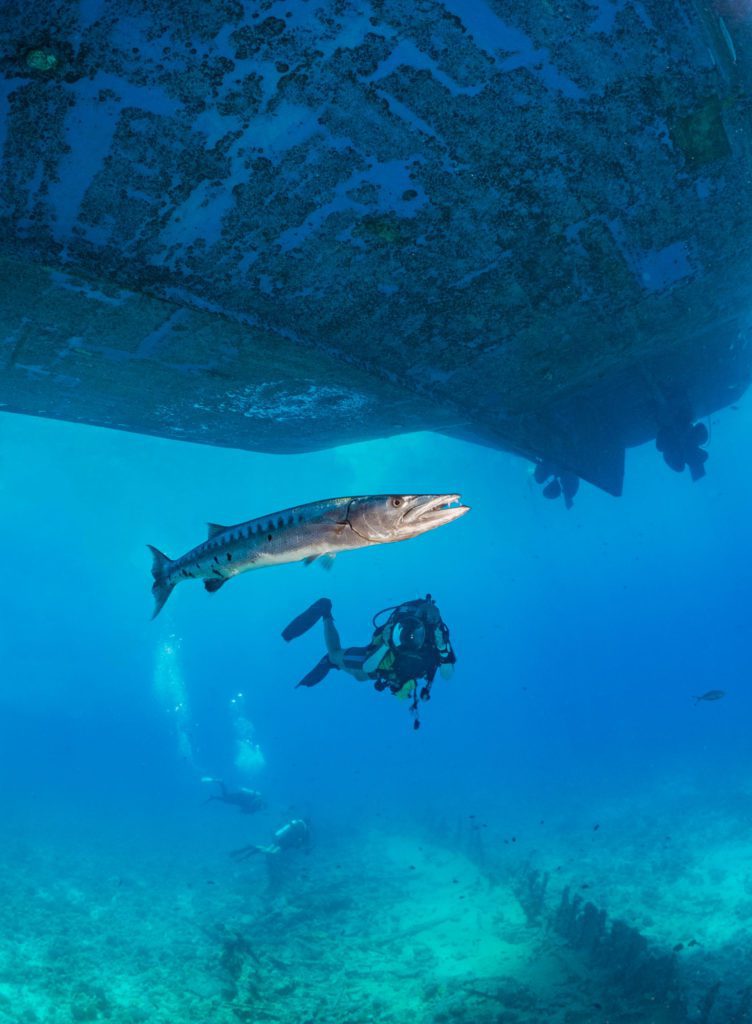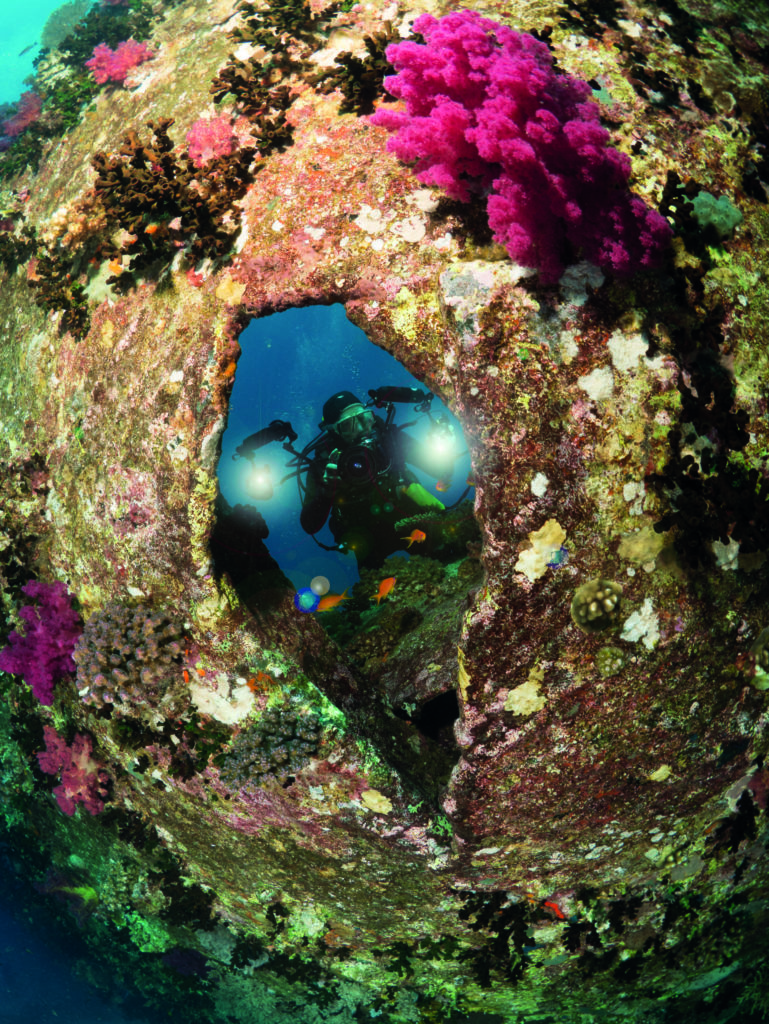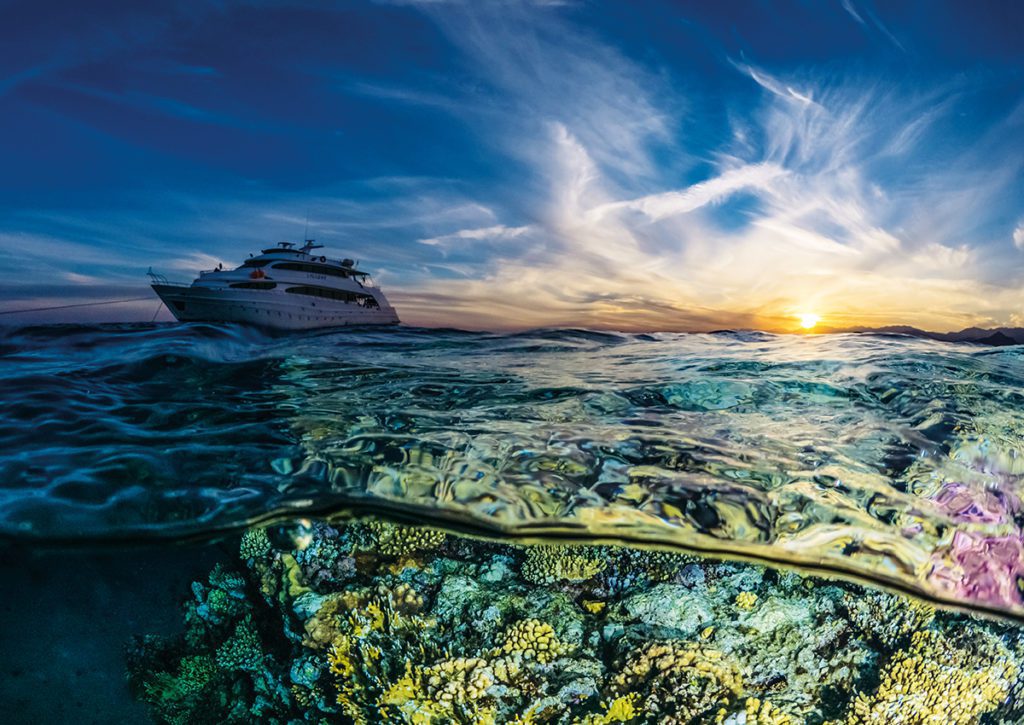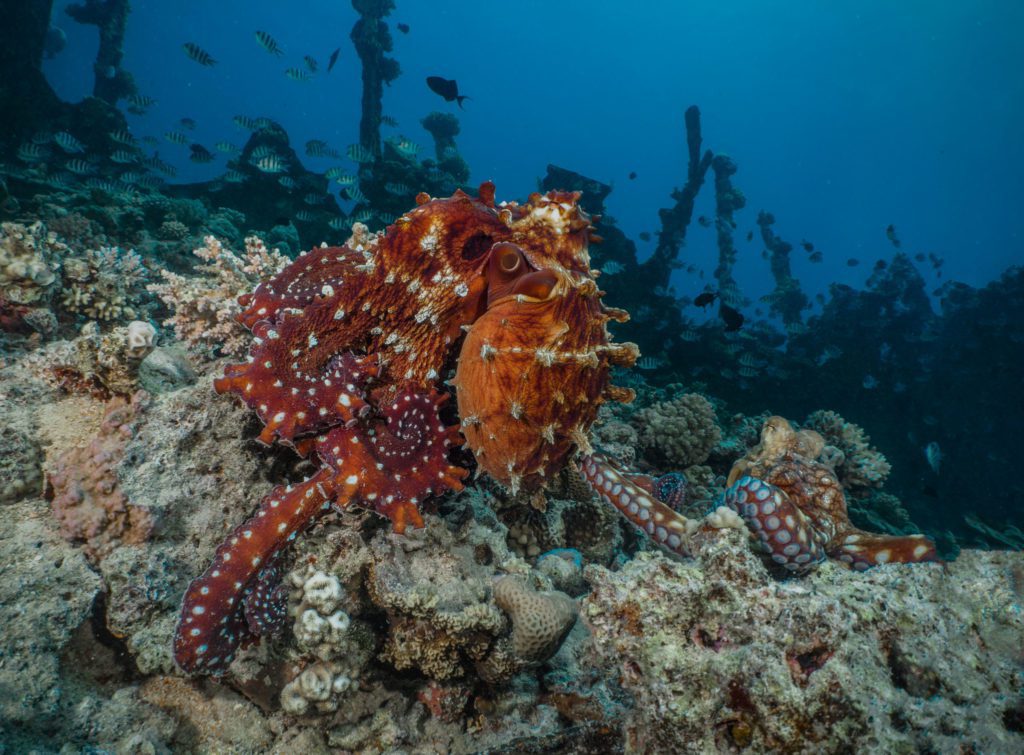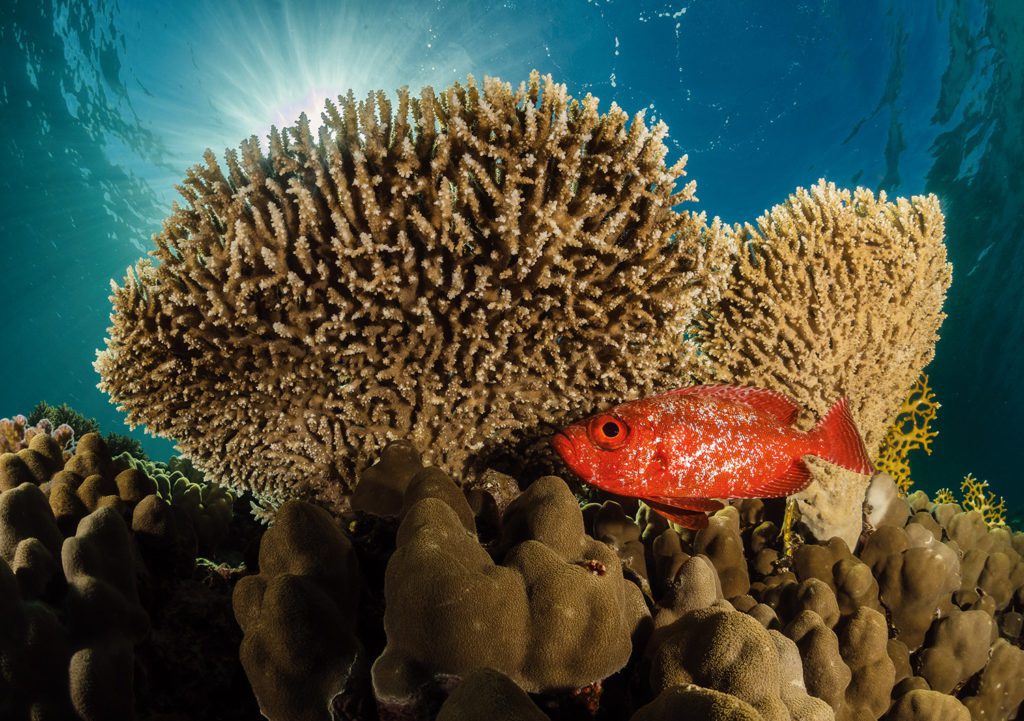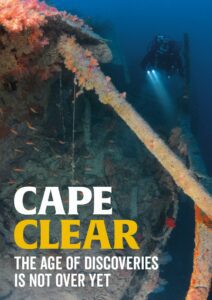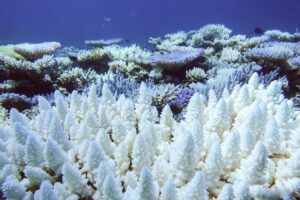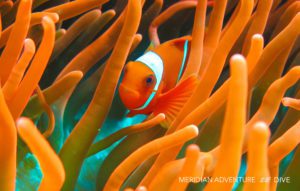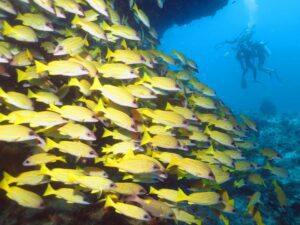Paul ‘Duxy' Duxfield explains the attractions of the Barge, a dive site in the northern Red Sea which is home to a plethora of marine species and a favourite with underwater photographers
I have previously written about the virtues of a tailored itinerary, not just for underwater photographers but equally beneficial to all divers that like an easier, slower pace to their diving when away on holiday, especially for those who don’t like being bound to the ringing of a bell telling them when to get up, when to dive and when to eat.
It’s a great way to take a dive trip, with the option to learn about underwater photography and marine life as an added bonus, equally suitable for those that want to dive for as long as they want when they want, as much as it is suitable for the newbies just getting to grips with their very first liveaboard.
And I wrote about the advantage of staying in-situ at a dive site, that facilitates such luxuries.
So this time I’m going to take a look at just such a dive spot that has become very popular for all the reasons above, and for all flavours of diver looking for a bit of freedom.
On my northern Red Sea itineraries for the last five years, I have been leading trips that take in a bit of Ras Mohammed, and then a couple of wrecks, one of which you may have heard of called the Thistlegorm. And we sometimes visit Tiran – weather depending – for a bit of Gordon, Thomas and Jackson, all first-class spots where we give you your first taste of freedom.
However, the main focal point of the week for a lot of our regulars is where we park up for the last few days diving of ‘open deck’ relaxation at an incredibly popular site called the Barge.
Where In The World?
There are dive spots that gain legendary status for a variety of reasons, I mentioned the Thistlegorm that we visit on this trip too, which is an example. Shark and Yolanda in Ras Mohammed National Park is another such spot we usually check out, but for sheer variety, amount and density of marine life, the Barge really takes some beating.
Situated close to a fringing reef near Gubal Island in the Northern Red Sea, the actual Barge itself is a wreck dive, but to be honest this is a bit of a stretch of the imagination being just a few metal spars jutting up from the bottom at between 10-16m.
No one seems to be able to decide upon its history or background either, but that doesn’t really matter in all honesty, this dive is much less about the metal work and more about the prolific marine life you most definitely will encounter, on every dive here.
And for this reason, you’d never sell it as a wreck dive, its main strength is that an area around and within the metal work gets washed with a regular, relatively predictable current, bringing with it nutrient-rich water that feeds everything from the bottom of the food chain up.
This means that as there’s abundant food for all comers, in just one dive you can see everything from tiny critters, crustaceans and nudibranchs to big schools of fish like sergeant majors and fusiliers, numerous sizes and species of moray, dozens of big scorpion and stonefish, and regular visits from turtles and dolphins.
As we stay for at least a couple of nights, I ask the skippers if we can park pretty much over the top of the Barge itself, allowing our guests to get in and out from the back of the boat, whenever they please, and for as long as they like to explore as wide an area around the Barge itself as they’d like.
We also let those that want to take advantage of our RIB taxi service to go further up the reef and drift back to the boat from either side of the Barge itself. We even have a couple of daily scheduled trips out to the 19th century wreck of the Ulysses, which is a short journey around the corner of the reef system, for those that don’t mind getting off and on a RIB.
It’s a popular site for taking classic moody wreck pictures, but in the afternoon is regularly visited by a pod of local dolphins, adding a frisson of anticipatory excitement to the proceedings. The Ulysses is also home to a very specific type of Flabellina nudibranch too, so it’s a given that you’ll get a visit from the dolphins when you’re armed only with your macro lens for shooting the tiny stuff!
Being relatively flat and shallow around the Barge means that throughout the day it’s bathed in great light, suitable for shooting with available light, strobes and mixed.
Nearer the shore and only a couple of minutes from the ladders of the boat underwater, the reef also comes up to the surface, but there’s a shallow cut into a beautiful, shallow sandy lagoon. And in here is a great way to avoid any troublesome current, but it’s also a popular spot for seeing lemon gobies, and in the mornings eagle rays. It’s like entering your own secret world.
I personally like this lagoon best for teaching people how to shoot sunset splitshots, as it’s quite easy to find a shallow area with reef close to the surface, just as the sun is going down, and sometimes still get the boat in the shot too. And while a bit tricky, these shots are very do-able for everyone to have a crack at.
How Do You Get The Best From The Barge?
Being presented with so many choices is actually the biggest problem you’ll have here when diving ‘open deck’, and I often find that divers used to being led around the dive sites by a guide sometimes struggle to get going initially. Those that dive a lot in the UK unsupervised take to it very quickly and easily. To make the transition easier for those with less experience of this sort of dive freedom, you always have the option of taking a guide or me along with you, to get your bearings.
So What Are My Personal Recommendations When Diving Here?
After getting your bearings and making mental notes of spots you’d like a closer look at, formulate a plan with your buddy and I’d suggest that you start off shooting wide-angle and spending some time actually on the Barge itself.
You’ll no doubt find some big morays, they have a regular here called George and I see him most trips – he’s mahoosive! And he tends to stick around for a while at a cosy spot, so you'll no doubt see him on a number of dives, and you can really see how much the light moving will change the shots you get of him.
You’ll also see numerous big scorpionfish, so will be able to get differing shots of these too.
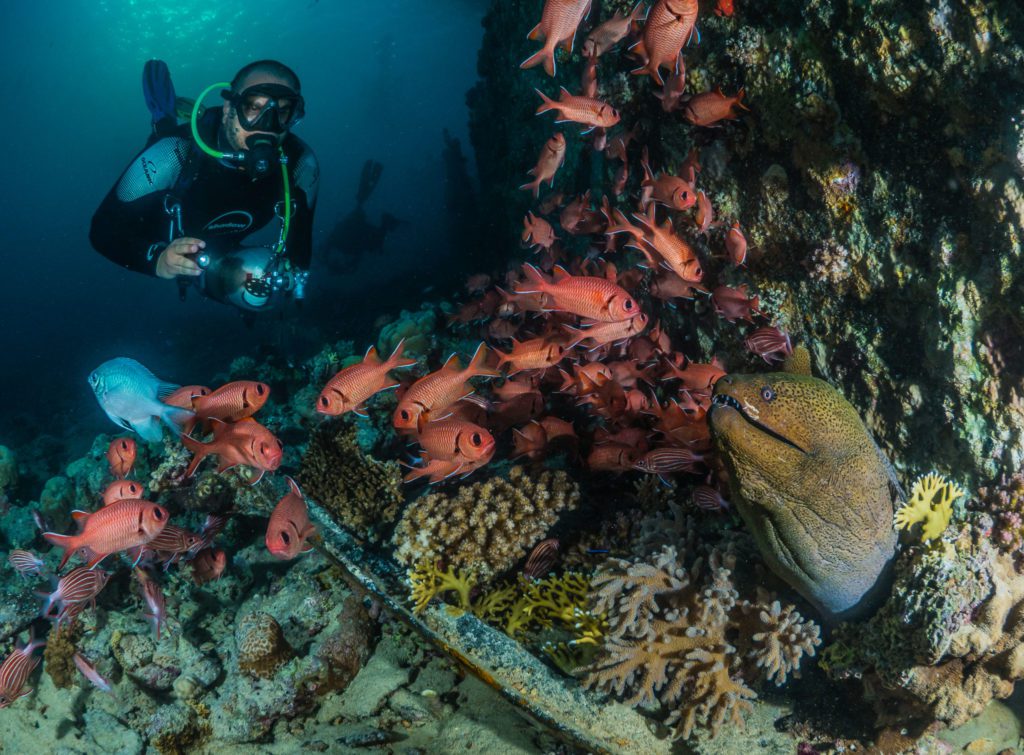
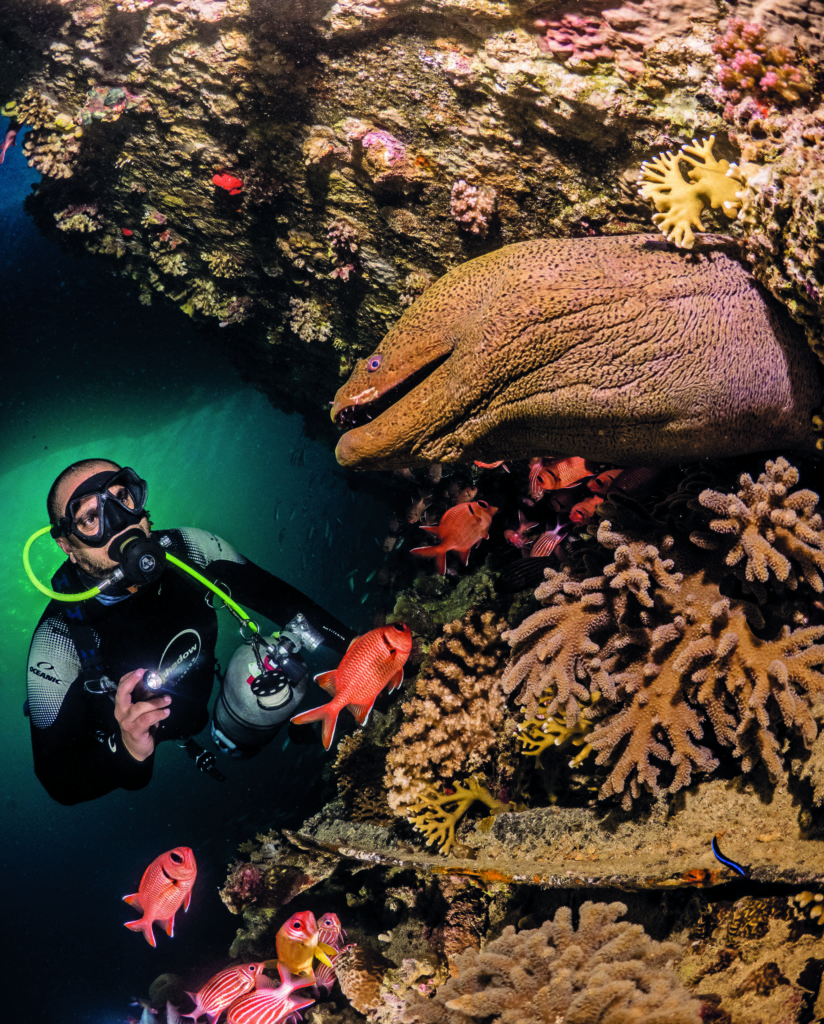
Around the sides of the Barge are schools of cardinalfish, and as the dusk falls huge schools of fusliers swirl around.
I find that doing a long pre-breakfast dive of around 80 to 90 minutes suits me best, I like the light at this time of the day and I often find that there’s only a couple of takers, with people enjoying a lay in – unless I come up and I’ve seen dolphins and then the next morning everybody is in at the crack of dawn!
Seriously though, it’s a great time to dive for photographers, with the light changing minute by minute. And you can always go off and have a mid-morning sleep – you’re on holiday, after all.
I will often take a pre-lunch dive of a similar duration, but maybe get dropped off up or down the reef by the RIB and take a leisurely drift back to the boat – depending which way the current is running, you’ll see turtles a lot on these dives.
I don’t bother doing a night dive on the first day, instead opting for a dusk dive of over an hour, getting in around a half hour before sunset. This way you’ll get to see the most action, and dolphins are regular visitors at this time, and you’ll experience the changeover from day to night, another bountiful time for photographers who value the lovely dappled light that the low sun delivers.
This is a great time to do your first sunset split shots, but they’re better achieved with a snorkel, as you’re going to be bobbing around on the surface for a bit. And if they don’t work out how you’d like, you can always try again the next day. Afterwards you could go back to the boat, put on your kit and do a night dive as another option.
The Witching Hour
Speaking of night dives, for those with a pen chance for this time of day, this is reckoned to be one of the best night dives in the world. I’m more of a wide-angle person, but it would be a crime to not do at least one dive at night here armed with your macro lens or diopter.
You’ll see a lot of the beasts that are less active during the day become more active when night falls, alongside a plethora of crustaceans, and nudibranchs. With octopi and squid doing the rounds filling their bellies, or getting up to hankypanky.
Good Behaviour
For fans of marine biology and animal behavior, the Barge is the perfect place to study. You can witness all types of typical fish behaviour, feeding, courtship and breeding. See the grey damsels exhibiting territoriality, even directly underneath the boat you can see barracuda lying in wait utilising the boat’s shadow to hide.
Wandering further afield you’ll see huge swathes of different types of coral all vying for space on the reef taking advantage of the sunlight and current.
There’s a spot close to the reef I’ve named Stonefish Corner, as you can see numerous impressive examples of these ambush predators lying in wait. They stick around in a good spot sometimes for months on end and I’ve been back to the same ones on successive trips.
In Summary
Having the freedom to stay and dive in one spot across a few days has obvious benefits to photographers, but even for those just interested in doing their own thing and observing the marine life without rushing around, it’s clearly a big bonus.
And for newbies just finding their fins, it allows them to gain confidence and grow their skills in a warm, shallow inviting environment while also getting a supercharged boost of accelerated learning about the reef and our lovely blue planet. So if you get a chance to do a trip like this, I’d urge you to give it a go – you won’t regret it.
Duxy Escorted Trips
A great way to learn how to use new kit and develop your skills is on a dedicated trip. My escorted trips are for all and if you have a GoPro or compact, I can improve your skills and realise your full potential in an easy-going, relaxed environment. If you’re a more-experienced shooter, my itineraries and locations are carefully picked to be very photographically productive.
Duxy will be leading a Red Sea liveaboard in 2023 – book now.
